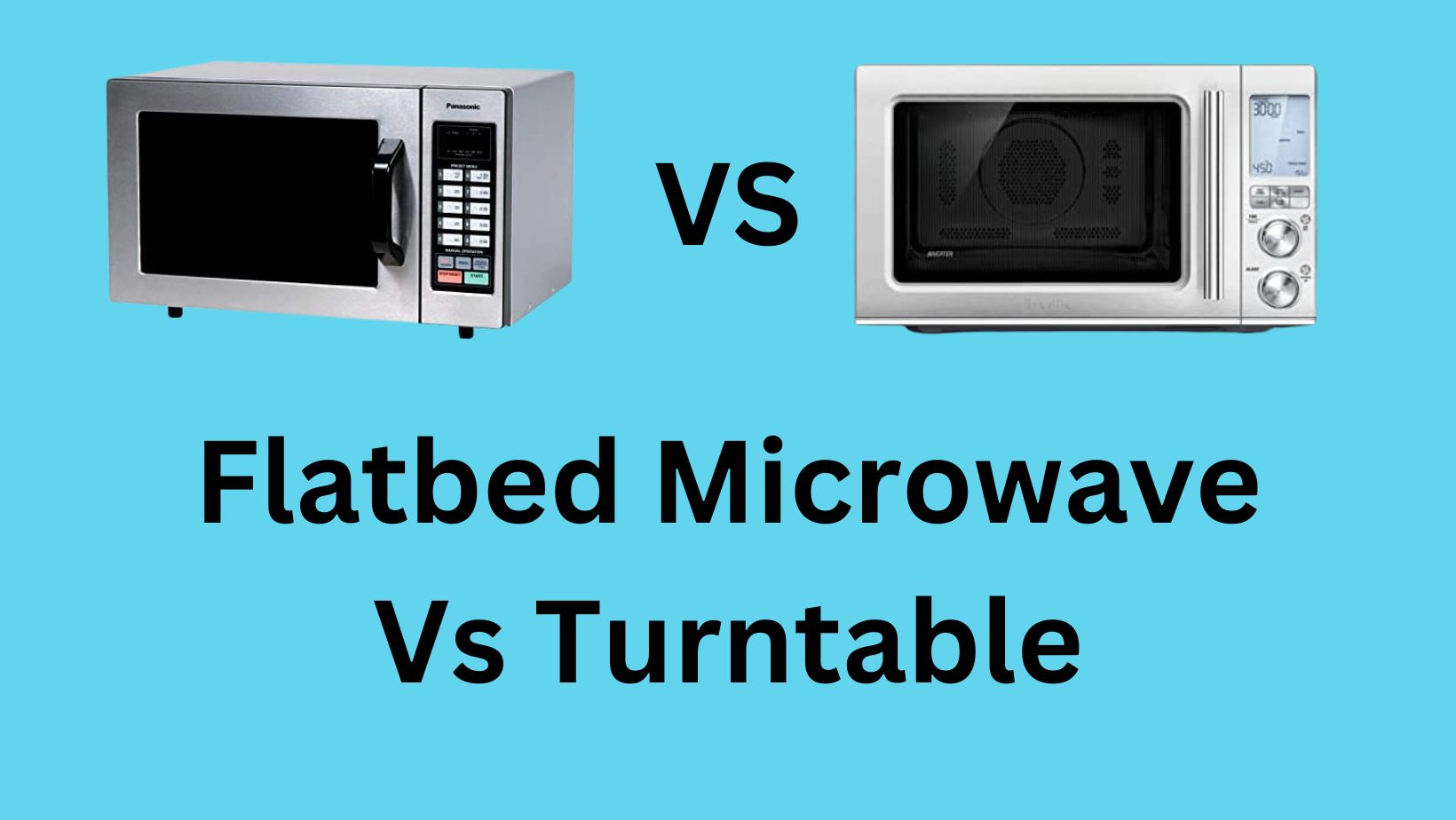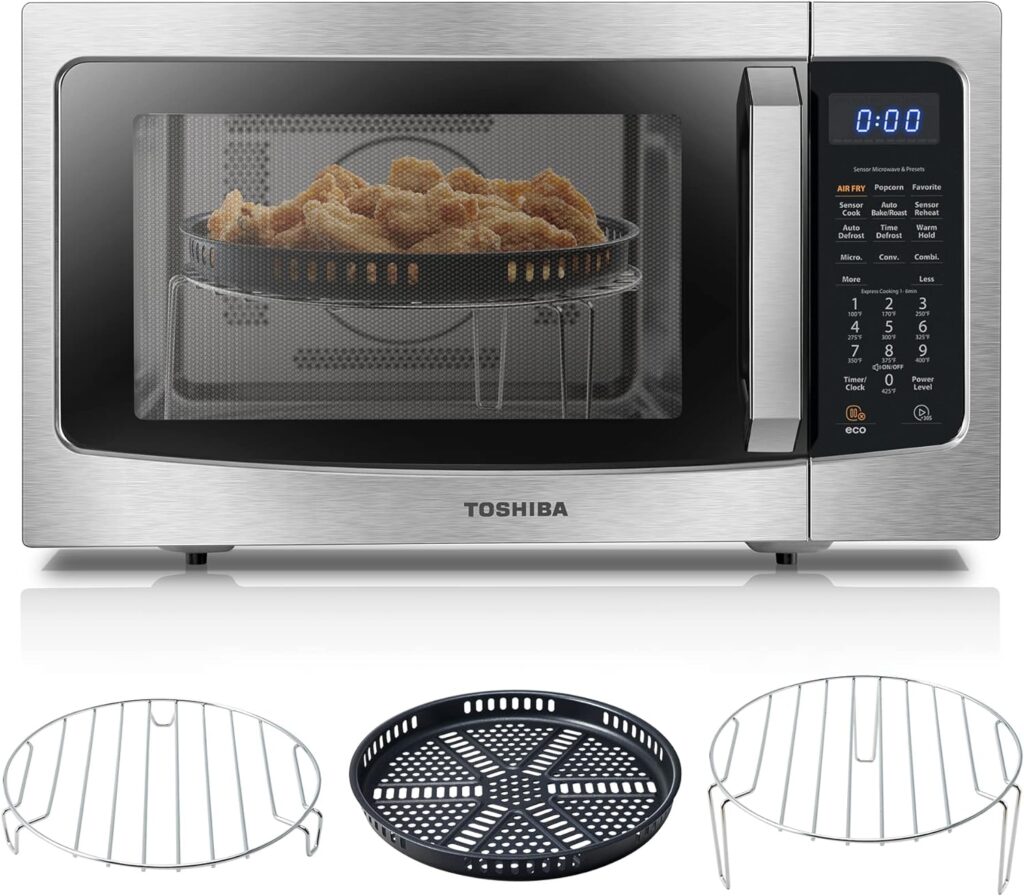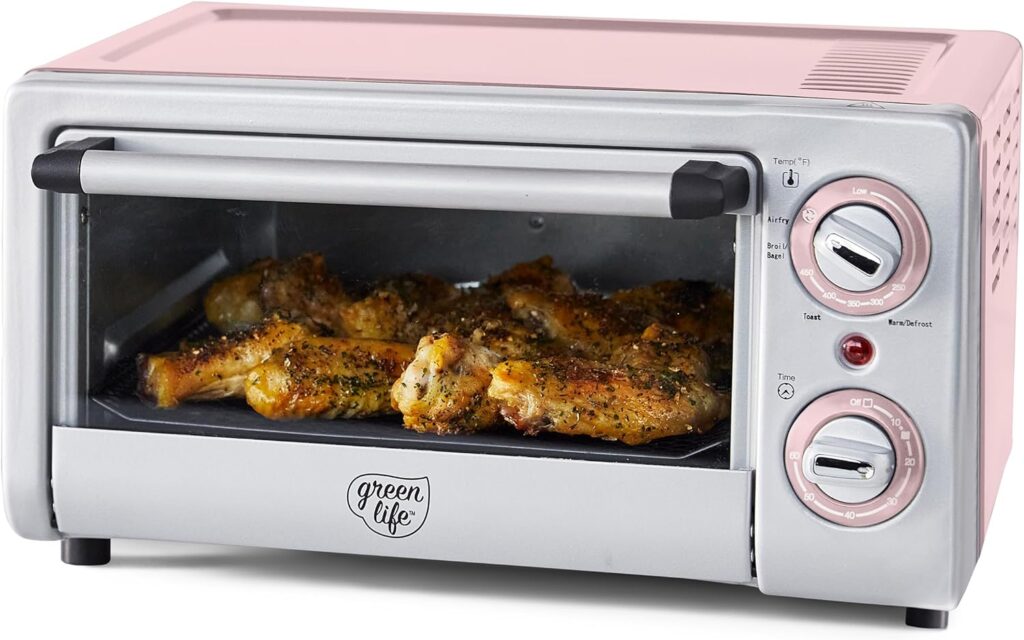Flatbed Microwave Vs Turntable [All You Need to Know]

Dear reader, if you purchase through links on our site, we may earn a small affiliate commission to help support the blog - at no extra cost to you. And it never influences our product selection process. Thank you!
Microwaves are an essential appliance in most kitchens today. They provide a quick and convenient way to heat up or cook food. Microwaves work by generating microwave energy that penetrates food, causing water molecules to vibrate and heat up. This allows food to be heated rapidly.
There are two main types of microwaves – flatbed microwaves and turntable microwaves. Both have their advantages and disadvantages. Understanding the key differences between flatbed and turntable microwaves can help you determine which is better suited for your needs.
How Flatbed Microwaves Work
Flatbed microwaves, sometimes called plain microwaves, have a flat floor or surface. The microwave energy is generated from above or the sides to penetrate food sitting directly on the floor.
In a flatbed microwave, microwaves come from an antenna called a waveguide. This directs the microwave energy down onto the food from above and around the sides. The waves then bounce and spread out to cover the floor space evenly.
Food in a flatbed microwave doesn’t move or rotate. It sits stationary, allowing the microwave energy to penetrate it thoroughly from all directions. This direct exposure allows food to heat rapidly and evenly.
How Turntable Microwaves Work
Turntable microwaves have a circular glass plate that rotates during cooking. Food is placed on this turntable plate which turns so the food rotates continuously while being exposed to the microwave energy.
In a turntable microwave, microwaves are emitted from a small antenna called a magnetron. The turntable plate rotates to ensure the microwaves penetrate the food evenly from all sides as it turns. This compensates for the less even distribution of energy.
The turntable allows microwaves to spread out and penetrate larger volumes of food. It also prevents hot and cold spots by constantly moving the food so it heats evenly. The turntable is driven by a small motor connected by a drive belt.
Key Differences Between Flatbed and Turntable Microwaves
There are several key differences between turntable and flatbed microwaves:
- Microwave distribution – Flatbed microwaves distribute microwave energy more directly and evenly over the floor space. Turntable microwaves have less even energy distribution so rely on the rotating plate.
- Food placement – Food can be placed anywhere in a flatbed, directly on the floor. Turntable microwaves require food to be placed directly on the rotating plate.
- Heating pattern – Flatbeds heat food more evenly as energy is directed from all sides. Turntables can develop hot and cold spots if not rotated correctly.
- Capacity – Flatbeds can fit larger and awkward shaped dishes as food sits directly on the floor. Turntable sizes are limited to the rotating plate size.
- Ease of cleaning – Flatbeds have a flat surface which is easy to wipe clean after spills. Turntables have the rotating plate and drive mechanism which requires more care.
Let’s look at these differences in more detail:

Microwave Distribution
The main difference between the two types is in the way microwave energy is distributed throughout the appliance.
In a flatbed microwave, the microwaves come directly down from the top and sides to cover the floor space evenly. This allows even heating as food gets direct exposure from all directions.
A turntable microwave relies on a rotating plate to achieve even coverage. The turntable aims to compensate for less even energy distribution from the magnetron. But without the direct exposure of a flatbed, there can still be hot and cold spots.
Food Placement
Due to their different energy patterns, food must be placed differently in flatbed and turntable microwaves.
Flatbed microwaves allow you to place food anywhere on the floor. Different sized plates, pans and dishes can sit directly on the flat surface. This provides great flexibility.
Turntable microwaves require all food to placed directly onto the rotating glass plate. This limits the size and shape of dishes that can be used otherwise food won’t be exposed evenly as the plate turns.
Heating Pattern
The heating pattern can also vary between the two types.
In a flatbed microwave, the direct exposure from above and all sides creates very even heating. Food tends to heat uniformly with less chance of hot or cold spots.
Turntable microwaves can sometimes develop cold and hot zones if food is not centered correctly. As the position changes with rotation, inconsistent heating can occur unless dishes are centered.
Capacity
Flatbed microwaves are better suited for larger dishes and pans, as well as awkward shapes. As food sits directly on the floor, the size and shape is not an issue. This gives great flexibility.
The rotating plate of a turntable microwave has size limitations. Large or oddly shaped plates may not rotate correctly. Ensure your cookware fits the turntable diameter before purchasing.
Ease of Cleaning
Clean up is easier with flatbed microwaves that have an open, flat floor. Spills and splatters can be quickly wiped down. The flat, smooth surfaces have no cracks or crevices where food can get trapped.
Turntable microwaves require a bit more care as the rotating plate and drive mechanism have more hiding spots. Spills on the drive parts can prevent smooth rotation. Pay special attention to keep these components grease-free.
Pros and Cons of Flatbed Microwaves
Advantages:
- Even heating and microwave distribution.
- Flexible food placement options.
- Can fit larger dishes and pans.
- Easy to clean flat surfaces.
Disadvantages:
- Limited models and options available.
- Tend to be more expensive.
- Not ideal for smaller portions.
- Can’t raise food on rack like some turntables.
Pros and Cons of Turntable Microwaves
Advantages:
- Wider range of models and options.
- Lower cost on average.
- Provides more even heating for smaller amounts.
- Can raise food using rack for more even browning.
Disadvantages:
- Rotating plate limits dish sizes.
- Food must be centered for even heating.
- Components like turntable and belt need cleaning.
- Repair costs can be higher.

Should You Choose a Flatbed or Turntable Microwave?
There are good reasons to consider both flatbed and turntable microwaves. Here are some things to keep in mind when deciding:
- If you regularly cook large dishes or pans, a flatbed provides more flexibility. The open floor fits more.
- Turntable models work well for those who mainly cook smaller plates of leftovers or frozen meals. The rotating plate ensures even heating.
- Those wanting top performance should opt for a flatbed. The direct exposure from all sides allows unbeatable evenness.
- People on a budget may want to consider a turntable model. Prices are more affordable on average.
- Pick a turntable if you want to elevate food on a rack for browning. Most flatbeds don’t accommodate racks.
- For easy cleaning, flatbeds win with their wipe-down surfaces. Turntables take more care around the drive mechanism.
- If choosing a turntable, always read reviews and ensure even heating. Go for trusted brands with good performance.
Overall, both flatbed and turntable microwaves have a place. Flatbeds excel when cooking larger portions and frozen foods where direct exposure gives reliable results. For smaller tasks like leftovers, turntables often provide adequate heating at a better price point. Consider your usage and budget to decide which suits your kitchen.
FAQs
Are flatbed microwaves better than turntable?
Flatbed microwaves are considered superior in their ability to distribute microwave energy evenly leading to uniform heating. The direct exposure to waves from all sides gives great results. But turntable models can still be a good choice for many situations.
Why are flatbed microwaves more expensive?
The technology required to generate and distribute microwave energy evenly across a flatbed floor makes these ovens more complex. Fewer manufacturers produce them and the specialized components come at a premium cost.
Can you put metal in a flatbed microwave?
Like all microwaves, metal should be avoided in flatbed models. Metal reflects microwave energy which can lead to arcing, burns or damage. Always check material is microwave-safe before heating.
How do you clean a flatbed microwave?
The smooth, flat floor of a flatbed microwave is easy to keep clean. Simply wipe spills promptly with a soft cloth and warm soapy water to remove grease or food debris. Avoid harsh abrasives. Check the owner’s manual for any special cleaning guidelines.
How do I know if my microwave is flatbed or turntable?
You can identify a flatbed microwave by its flush floor with no turntable or glass plate. Food will sit directly on the bottom surface. Turntable models will have a clearly visible rotating plate in the center of the oven.
Can I use a flatbed microwave without a turntable?
A microwave specifically designed as a flatbed model will not have or require a turntable. Always check your particular microwave’s manual if you are unsure whether it needs a turntable or not. Operating it incorrectly could cause damage.
Why is my microwave turntable not turning?
Common reasons for a turntable malfunction can include a faulty drive motor, damaged rotating ring or debris stuck in the mechanism. Try cleaning any dirt or grease buildup first. If problems persist, contact an appliance repair technician to inspect and fix the issue.
Can I use a smaller turntable in my microwave?
Microwave turntables are precisely matched to the oven size and output. Replacing it with a smaller turntable risks uneven heating and exposure. Always consult your owner’s manual and use the correct replacement part recommended by the manufacturer.
In summary, understanding flatbed vs turntable microwave technology helps choose the right oven for your kitchen and cooking needs. Look for models with proven microwave distribution patterns and performance within your budget. With proper selection and care, countertop microwaves provide a convenient way to heat up meals quickly.
While both flatbed and turntable microwaves have their advantages, choosing one over the other ultimately comes down to your individual needs and preferences.
Flatbed microwaves are designed with a large surface area, making it easier to accommodate larger items like casserole dishes or baking sheets. This makes them ideal for cooking food in bulk, as you can easily load multiple dishes at once without worrying about overcrowding your microwave. Additionally, since heat is distributed evenly across the entire surface of the microwave, food cooks more quickly and evenly than it would with a turntable model.
On the other hand, turntable microwaves are generally considered to be more compact and space-efficient than flatbed models. With a rotating plate that constantly turns the food, turntable microwaves are ideal for smaller items like single servings or snacks. Additionally, some users find this feature to be more convenient and intuitive than having to manually turn over large, awkward items like casserole dishes.
What is a flatbed microwave and how does it work differently from a turntable microwave oven?
A flatbed microwave is a type of microwave oven that uses a large, heated surface area to cook food. Unlike a turntable microwave, which uses a rotating plate to turn the food as it heats, the heat in a flatbed microwave is distributed evenly across the entire cooking surface. This makes it ideal for cooking larger items like
How to choose the best oven for your needs?
When choosing a microwave oven, there are several factors to consider in order to find the best option for your needs. These may include things like the size and capacity of the oven, as well as its features and functionality. Other important considerations may include your budget and preferences around usability, such as whether you prefer a flatbed or turntable design. Ultimately, the best way to choose a microwave oven is by evaluating your individual needs, preferences, and cooking habits, and then selecting an option that best meets these criteria. With so many different types and models available today, there is sure to be a microwave that fits your needs perfectly. So do some research, talk to other cooks or chefs about their experiences with different microwaves, and take the time to find the best one for you.
Which type of oven is better for small kitchens
There is no definitive answer to this question, as different people may have different preferences when it comes to choosing a microwave for small kitchens. Some factors to consider when making this decision might include the size and capacity of the oven, as well as its features and functionality. Factors like your budget and usability preferences, such as whether you prefer a flatbed or turntable design, may also be important considerations. Ultimately, the best way to choose the right oven for small kitchens is by evaluating your individual needs and preferences and then selecting an option that best meets these criteria. With so many different types and models available today, there is sure to be a microwave that fits your needs perfectly. So do some research, talk to other cooks or chefs about their experiences with different microwaves, and take the time to find one that works for you.
How to save energy with your new oven?
When choosing a new microwave oven, there are several ways that you can save energy and minimize your impact on the environment. One key strategy is to opt for an energy-efficient model that has been certified by an independent agency, such as ENERGY STAR or the U.S. Department of Energy. Additionally, you can maximize energy efficiency by ensuring that your oven is properly maintained and cleaned regularly, using its timer function instead of leaving it running unnecessarily, and following proper cooking guidelines for different types of food. Another effective way to reduce energy usage is to use your oven less frequently, especially if you have other cooking options available in your kitchen. Whether you are looking for a new microwave or trying to get more out of the one you already have, there are many simple steps that you can take to help save energy and reduce your impact on the environment. So do some research, talk to other cooks or chefs about their experiences with different microwaves, and find the model that best fits your needs and preferences.
Final thought
Turntable microwaves have been around for a long time and are still very popular today. However, there is a new type of microwave on the market that is quickly gaining in popularity- the flatbed microwave. So, which one is better? Let’s take a look at the pros and cons of each type.
-Turntable microwaves typically have more features than flatbed microwaves. They often come with per-set cooking programs and multiple power levels. Flatbed microwaves are generally simpler machines, with fewer buttons and no pre-set cooking programs.
-One major advantage of turntable microwaves is that they offer more even heating than flatbed microwaves do. This is because food can rotate on the turntable as it cooks, ensuring that all sides of the food item cook evenly. Flatbed microwaves tend to heat from the top down only, so some parts of your food may be overcooked while others remain undercooked.
-Another big advantage of turntable microwaves is that they can accommodate larger items than flatbed microwaves can. If you want to cook a large pizza or casserole dish, for example, you’ll need a turntable microwave. Flatbed microwaves usually max out at around 9 or 10 inches wide, while most turntables measure in at 12 or 13 inches wide.
-So overall, which one should you buy? If you want a simple machine with few bells and whistles, go for a flatbed microwave oven. But if you want more versatility and even heating in your microwave oven, go for a traditional turntable model.
- Kitchen Knives - May 3, 2024
- Top 10 Best kitchen egg cooker [High Quality] - May 3, 2024
- Top 10 Best cutting boards for kitchen [High Quality] - May 1, 2024
